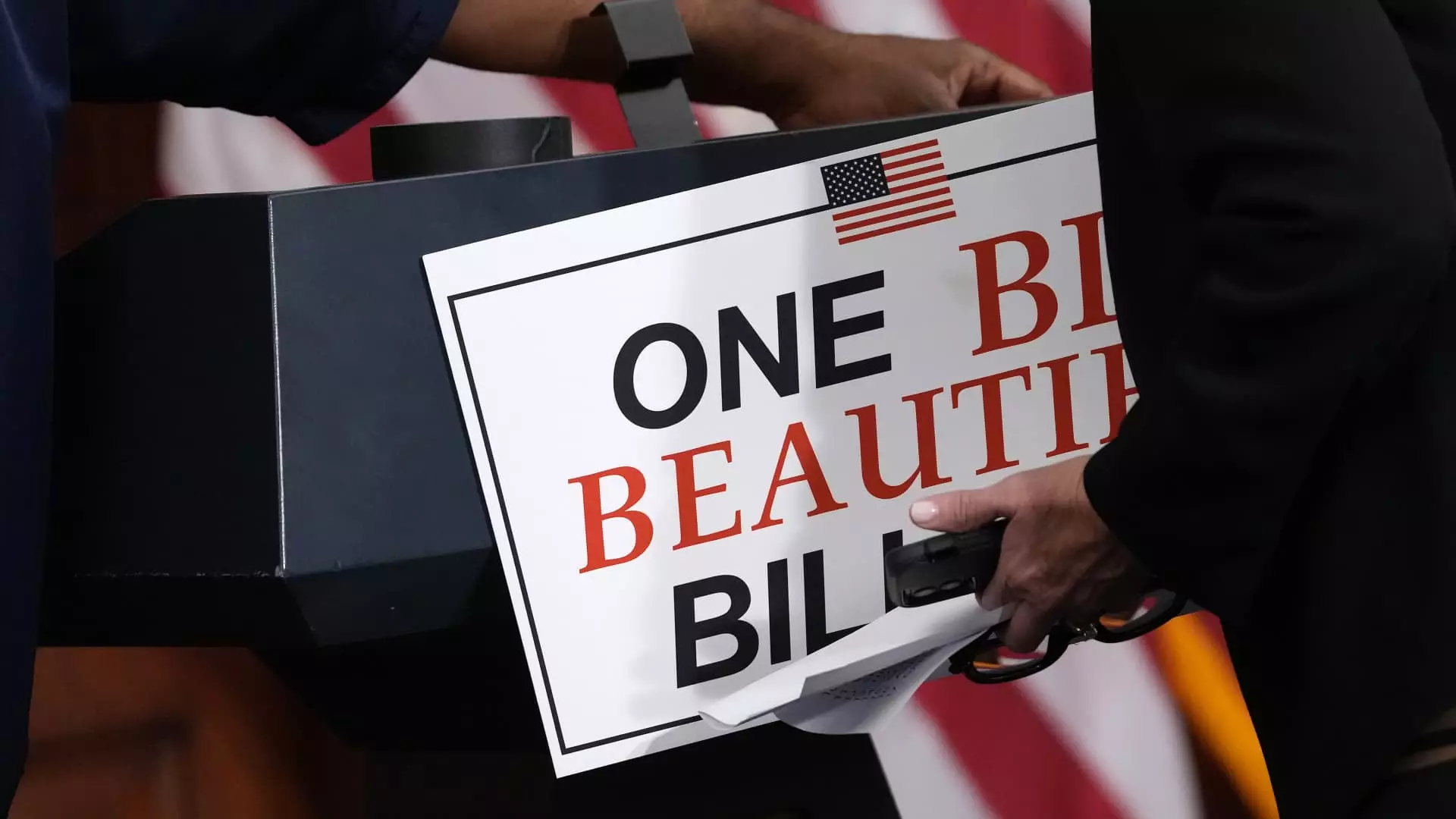On a backdrop of economic instability, the House Republicans have championed a tax and spending package, dubbed the “One Big Beautiful Bill Act,” that they claim will usher in an era of financial prosperity. For those directly involved yet on the periphery, the bill has spurred vehement debates about its implications. At its core, this legislation not only makes permanent the much-criticized tax cuts from 2017 initiated by then-President Donald Trump but also carves out new financial advantages for specific demographics, such as older Americans and those reliant on tip income. However, it is difficult to ignore the insidious undertones embedded within this “mighty” overhaul. While proponents argue that the bill will bolster economic growth, the underlying message reverberates differently—an inherent disregard for our lower-income citizens, banking instead on a trickle-up economic model that seems more aligned with the wealthy.
A Cliffhanger: Spending Cuts vs. Tax Breaks
While the GOP pushes forward with their agenda, an unsettling reality emerges. Significant cuts targeting vital programs for low-income families—like Medicaid and SNAP—loom heavily over this proposal, calling to question the ethical implications of prioritizing tax cuts for affluent individuals while slashing support for society’s most vulnerable. The Congressional Budget Office has projected the potential for the package to explode the deficit by an estimated $3.8 trillion over the next decade, highlighting a troubling trend toward fiscal irresponsibility cloaked in fiscal conservativism. The fixation on tax breaks for the rich appears to supersede any commitment to economic equity, making for a disconcerting juxtaposition against a backdrop of pressing issues like affordable healthcare and food security.
Moreover, the use of “budget reconciliation,” a legislative tactic that conveniently circumvents the Senate filibuster, raises eyebrows. The makeup of Congress seems to both enable and facilitate the passage of a bill that advocates for a myopic view of fiscal policy. Some GOP lawmakers express concerns about the costs tied to this sweeping legislation, with Senator Ron Johnson voicing the possibility of halting progress until accountability for spending reductions is acknowledged. This contentious atmosphere serves as a reminder of the intra-party divisions that could derail unity over such significant legislation.
Tax Loopholes and SALT Restrictions
A particularly contentious element in the proposed bill is the treatment of state and local tax deductions, known as SALT. Previously unrestricted, the implementation of a $10,000 limit on these deductions has drawn ire, particularly in high-tax states like New York and New Jersey. This ceiling, established under the 2017 Tax Cuts and Jobs Act, appears tailored to punish residents in states that invest heavily in public services. The House Republicans propose a temporary increase of the SALT limit to $40,000 before it phases out for high earners. However, this proposed adjustment rings hollow—historically, tax reforms have not favored the middle to lower classes who are disproportionately impacted by SALT limits.
With ongoing negotiations anticipated in the Senate, many grassroots advocates remain skeptical of transformative change. The bipartisan agreement needed to navigate these waters feels far away. The limited agenda toward tax equity raises questions about the moral compass guiding this legislation. As pundits expect modification through ongoing debates, it remains plausible that some of these elements may not survive, further projecting the question: who benefits from this alleged overhaul?
Policy Solutions for Working Families
While advocates for the House’s strategy cling to the notion that tax reductions stimulate lower unemployment rates, a paradigm shift is imperative to create genuine, sustainable economic health. Extending the child tax credit, which the House seeks to maintain at a maximum of $2,000—moving to $2,500 for a brief period—marks a step forward but barely scratches the surface of what working families truly need. Detractors cite such measures as insufficient amid growing living costs and pressing societal needs.
True reform would seek to facilitate comprehensive support rather than fleeting financial assistance, acknowledging the struggles faced by average Americans who require not just fleeting assistance but a firmer footing in economic stability. Conversations about higher child tax credits, recently raised by Senate members, expose the ongoing realization that current offerings may need reevaluation—an admission of inadequacy in addressing the realities of the average family’s financial struggles.
As America stands at a crossroads guided by partisan strife, the implications of the “One Big Beautiful Bill Act” will ripple throughout society, revealing deep-rooted fissures in our national priorities. Balancing tax relief for businesses and wealthier individuals with crucial support for families and low-income communities is decidedly more complex than a singular narrative promotes. We must confront the uncomfortable truth: our policies must genuinely reflect a commitment to equity if we aspire to live up to the notion of a nation that uplifts all its citizens, not just those at the top.

